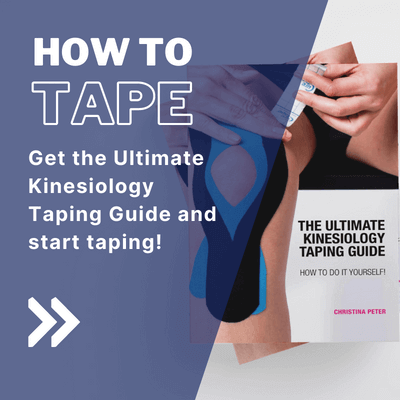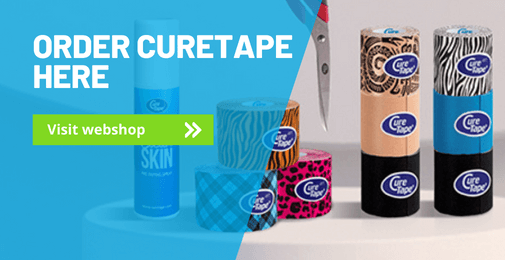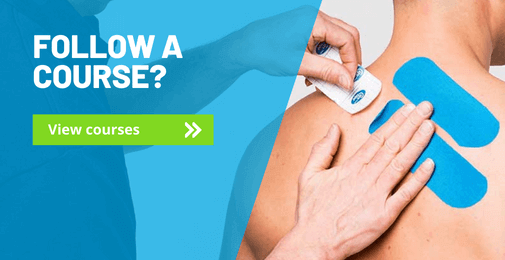If a finger is sprained or overstretched, you can support the affected finger with kinesiology tape by immobilising it slightly. The tape will help to reduce inflammation, and provide support and compression to the affected area. When applying the kinesiology tape, it is important to follow the instructions carefully. Once the tape has been applied, it is important to perform light stretches and movement exercises to help restore range of motion. Make sure to discontinue taping if any signs of pain or discomfort are present. If the pain, swelling, and/or restricted mobility persists for more than two days, consult a doctor or therapist.
How to tape a sprained finger
Tips for a good hand taping application:
- Is the cause of the complaint or pain clear?
- Check if there any contraindications for not taping.
- Before you start taping, carefully read the instructions.
- Choose a colour of tape, any colour that fits your mood!
- Round of all the edges to prevent peeling.
- Do not stretch the tape at the beginning and the end.
- Rub the tape well for adhesion. Heat activates the adhesive layer.
- Showering or swimming is possible, pat the tape dry after it gets wet. Do not rub it hard.
- It is easier to remove the tape with body or massage oil.

Christina’s advice when taping your hand
In the self-taping instructions, I have chosen taping applications that are easy to apply yourself. In order to make this treatment safe, I give practical tips, which you should take into account before, during and after a tape treatment. They are based on my years of practical experience. If the complaints persist, always consult a therapist or doctor.
INSTRUCTION
Tape
Shape:I-Tape.
Number of strips: 2.
Technique: muscle technique (considerable stretch).
Measuring and cutting the tape
- Sit at a table and measure the tapes from the tip of the finger to the wrist.
- To make the tapes fit, cut the strips of tape lengthwise. The first tape should be about 1 cm wide and the second tape should measure about 2.5 cm wide, depending on the width of the affected finger.
Applying the tape
Step 1:

Step 2:
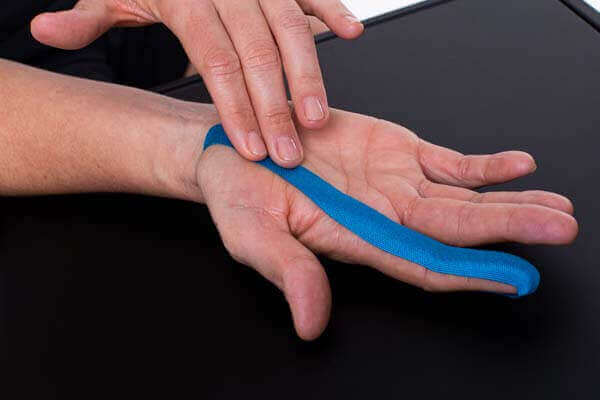
Step 3:
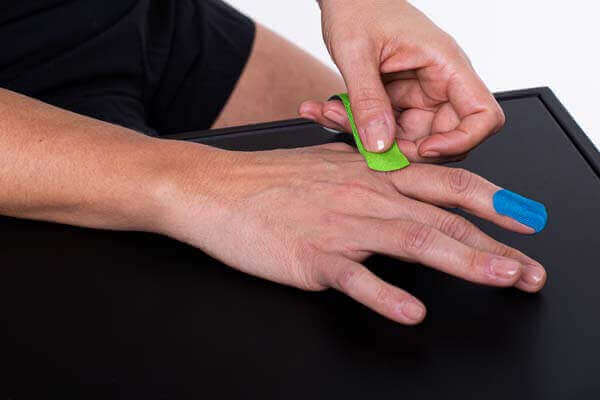
Step 4:
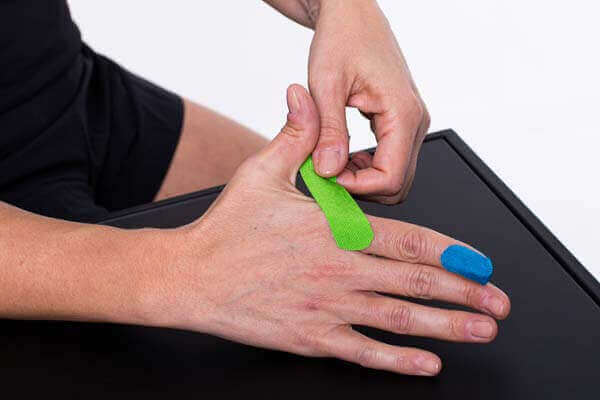
Step 5:
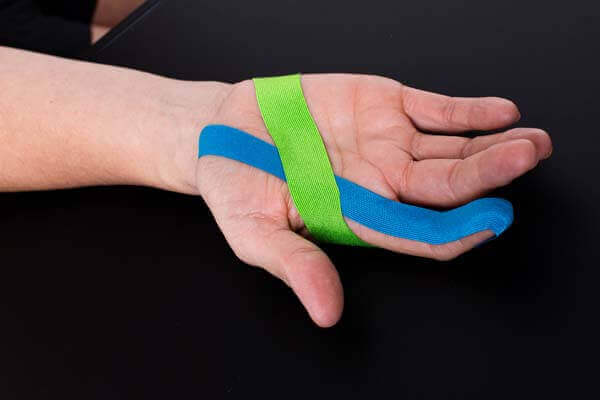
- Place the base of the first tape on the tip of the finger (fingernail), without stretching, and tape it in place.
- After the base has been attached, pull the tape with a considerable stretch towards the palm of the hand. Attach the end piece of the tape there and then stretch the finger.
- Rub the tape on well.
- To reinforce the first tape, use the second tape for additional anchoring. Do not use a stretch. Stick the base to the back of the hand and lead the tape to the palm. Rub the tape firmly.
Popular products to tape your foot
-
MYCureTape® – 3 Rolls Kinesiology Tape – Value Pack
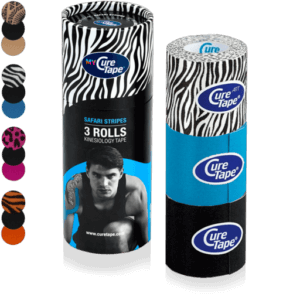 $26.95
In stockSelect options This product has multiple variants. The options may be chosen on the product page
$26.95
In stockSelect options This product has multiple variants. The options may be chosen on the product page -
Book: The Ultimate Kinesiology Taping Guide
 $29.95
In stockAdd to cart
$29.95
In stockAdd to cart -
CureTape® Ultimate Self-Tape Starter Kit
 $87.95
In stockAdd to cart
$87.95
In stockAdd to cart
Learn how to tape
- 30 taping instructions for common injuries that taping can help you with
- 176 pages of clear written instructions
- 200 step-by-step instructions accompanied by photo’s, illustrations and scannable video’s through QR codes
What are you waiting for? Order your copy today!
*This book is intended for people who want to tape an injury or complaint themselves. If uncertain about the complaint, consult a physiotherapist.
THYSOL is the manufacturer of the kinesiology tape brand CureTape. As CureTape, we have been training and supplying professionals for almost 25 years. And consumers now know how to find us too! By manufacturing all our tapes in our own factory, we can guarantee the best quality!
Please note that the indicated tape applications and information on our website about the possibilities with kinesiology tape have not yet been scientifically proven. The statements and examples mentioned are based on long-term experiences of patients and trained therapists.
Contraindications not to tape: pregnancy, open wounds, broken bones, unexplained complaints, allergies and skin diseases, use of medication such as blood thinners, thrombosis and fever. Always apply tape in consultation with a specialist.


